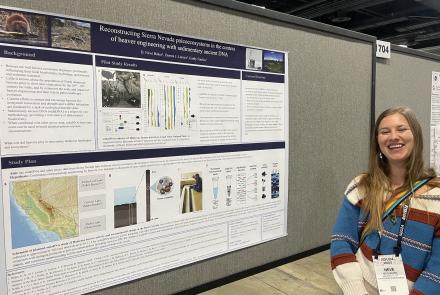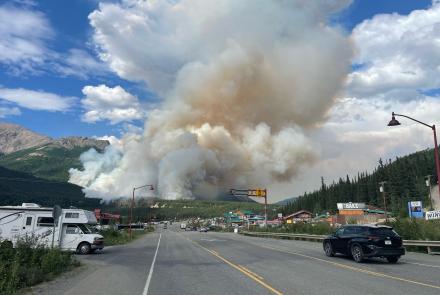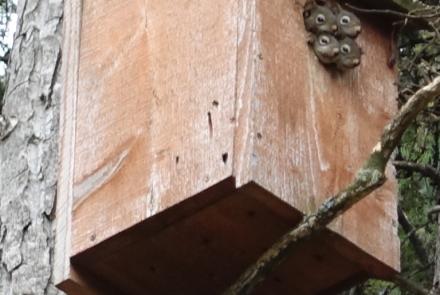

Aleutian Canada goose comeback continues
NIZKI—“Goose, five. Got it. Thank you.”
Vernon Byrd set down his radio and scribbled in his notebook that someone had found a goose nest with five warm eggs inside. During a three-day survey of this small island, the senior biologist of the Alaska Maritime National Wildlife Refuge used a good deal of pencil lead in further documenting the comeback of the once-endangered Aleutian Canada goose. He and nine others who searched for goose nests on the island found 432; during a survey six years before, searchers found 250 nests on both Nizki and neighboring Alaid Island, each about 1,500 acres.
“I think it’s conceivable that there’s 1,000 nests on both Nizki and Alaid” Byrd said during the survey.
On Nizki, between Shemya and Attu near the western end of the Aleutian chain, goose calls and the cries of gulls filled the air. Puffins blasted from hillside burrows and shot toward the ocean like clowns shot from cannons. Aleutian terns chirped in tight circles. The island belonged to the birds, which wasn’t the case in 1984, when biologists counted zero goose nests on Nizki and puffins nested offshore.
“Seeing geese in the sky’s a big difference,” said Mike Boylan, supervisor for National Wildlife Refuges in the southern Alaska region and a part of the nest-searching team. “These were silent skies before.”
Prior to 1962, biologists thought one of Nizki’s loudest residents—the Aleutian Canada goose—might have disappeared from the planet. In 1962, Bob “Sea Otter” Jones found a group of about 250 on Buldir Island, a relative speck in the Aleutians between Kiska and Shemya islands. Buldir’s remoteness and rocky shoreline discouraged fur trappers from stocking the island with arctic foxes in the late 1800s and early 1900s. The foxes, stocked on every other island of the Aleutians, preyed upon goose nests, goslings, and adult birds when they molted and couldn’t fly.
Jones, then manager of the Aleutian Islands National Wildlife Refuge, began trapping and killing foxes on Aleutian islands, starting with Amchitka. The staff of the Alaska Maritime National Wildlife Refuge has continued the job, eliminating foxes on up to 40 other islands, including Nizki in 1976. They also stocked the island with young geese in 1983. Four years later, sea-otter researcher Jim Estes saw a pair of adult geese with goslings on Nizki, which encouraged refuge managers to stock the island with more first-year geese that will return to the place from which they begin their first migration.
When Aleutian Canada geese were on the endangered list, no one knew where they spent their winters until Dennis Woolington tracked them up and down the West Coast of the U.S. and Canada for his master’s degree work in the mid-1970s. When he found groups of geese in the San Joaquin and Sacramento valleys in California, he told authorities who closed the hunting season for all Canada geese in those areas.
“Dennis’s work was fundamental for the recovery of the Aleutian Canada goose,” Byrd said. “(Hunting closures) had to happen.”
Woolington, now with the San Luis National Wildlife Refuge in California, counted 790 Aleutian Canada geese in his 1975 survey. The birds came off the Endangered Species List in 2001, and a spring 2004 count of birds on their California wintering grounds totaled about 73,000. The biologists finding the plentiful nests on Nizki said the comeback of the Aleutian Canada goose is complete enough that they may not need to visit Nizki again in five years, which is the standard recount time for birds that had been on the Endangered Species List.
“It’s all a direct result of guys trapping foxes off the island here and other guys planting geese here,” said Jeff Williams, a wildlife biologist at the refuge who counted nests on Nizki in 1998 and 2004.







